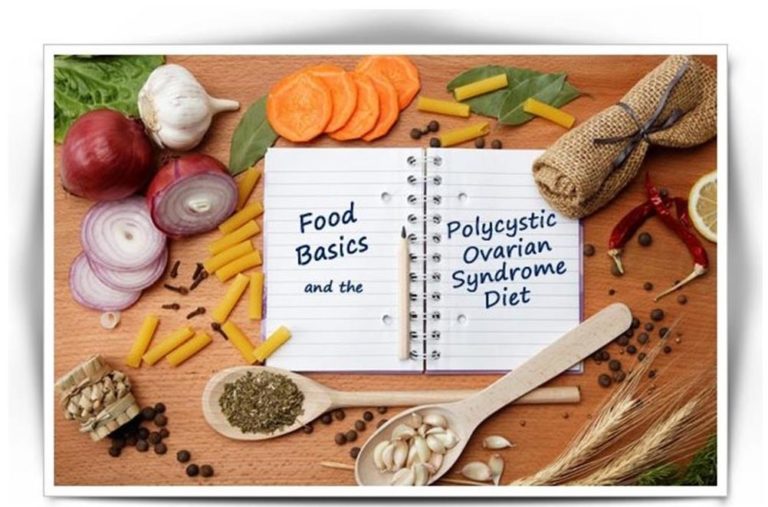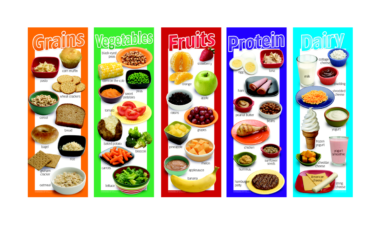FOOD BASICS & THE POLYCYSTIC OVARIAN SYNDROME DIET.
This article was taken from PCOS Healthy Diet.com
by McKenzie Nelson
Research shows that the most effective polycystic ovarian syndrome diet is one that is made up of low carbs, moderate protein, and low fat from whole foods. To be more specific, studies suggest the best PCOS diets should contain 30% complex carbohydrates, 40% protein, and 30% “good” quality fats.
This is good information to know, but for some, it may cause a wrinkling of the forehead, a scrunching of the eyebrows, followed by a “huh?” Complex carbohydrates, “good” fats, what does THAT mean?
If you’re like me, before I started researching the effects food has on PCOS, what I learned in school about basic food and nutrition had long been forgotten. I thought it might be helpful to go back and visit some of the food basics and how they relate to the symptoms of polycystic ovaries and overall good health.
MACRONUTRIENTS, MICRONURIENTS AND WHAT?
What gives food its taste and texture and what determines whether or not it’s good for you are the nutrients that are in the food. Nutrients are needed for growth and maintenance, and play a huge role in whether or not your body functions properly.
The largest make-up of nutrients in food, known as macronutrients, are carbohydrates, proteins, fats, and water.
The second largest are the vitamins and minerals. These are known as micronutrients.
The third component of food is not nutrient at all. These are the “other” substances in food that most commercial producers don’t like to advertise. They include pesticides, herbicides, and additives.
THE MACRONUTRIENTS
Carbohydrates
Often called “carbs”, carbohydrates are what your body uses to make glucose, and glucose is the fuel that gives you energy. Your body can either use the glucose immediately or store it in your liver and muscles for when it’s needed later.
Eating the right type and the right amount makes a big difference between battling with insulin resistance and carrying extra weight, one of the symptoms of polycystic ovaries, or having a lean healthy physique.
Good Carbs – Bad Carbs
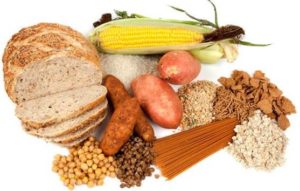
Examples of “good carbs” in the Polycystic Ovarian Syndrome Diet.
“Good” carbs describes foods that have more fiber, complex carbohydrates, and do not contain added sugars. Complex carbohydrates take longer to break down into glucose and are therefore a better, longer lasting source of energy. Examples are vegetables, fruits, whole grains and beans.
The term “bad” carbs refers to food with refined carbohydrates, meaning they’re made from white flour or contain added sugars. Examples include white bread, cakes, cookies and sodas.
If you’re following a polycystic ovarian syndrome diet plan, you need to stay away from refined carbohydrates, also known as simple sugars. These cause your blood sugar to spike and your body to release too much insulin, which can stimulate the production of testosterone. Excess testosterone is responsible for many of the symptoms of polycystic ovaries.
Proteins
Proteins provide the building blocks for most of the functional and structural components of your body. Proteins are also used to build muscle, which in turn, helps burn fat. Only as a last resort are proteins used as a source of energy.
They are found, to a certain degree, in all foods, both plant and animal.
Protein needs to be a part of every meal. It helps stabilize your blood sugar and provides a steady supply of energy. It keeps you from feeling hungry for longer periods of time and can help stabilize your natural level of testosterone.
Fats
Love ‘em or hate ‘em, you have to have ‘em, even if you’re on a polycystic ovarian syndrome diet. They provide essential fatty acids, help keep your skin soft, deliver fat-soluble vitamins, and are a great source of energizing fuel.
Fats are divided into three categories:
- Unsaturated fats are liquid at room temperature and though most come from plant sources, some are found in fish.
- Saturated fats are solid at room temperature and generally come from animal sources of food, such as red meat, poultry, and full fat dairy products.
- Trans fat occurs in some foods, but only in small amounts. The main source of trans fat comes from oils produced by the man-made process of hydrogenation.
Good Fat – Bad Fat
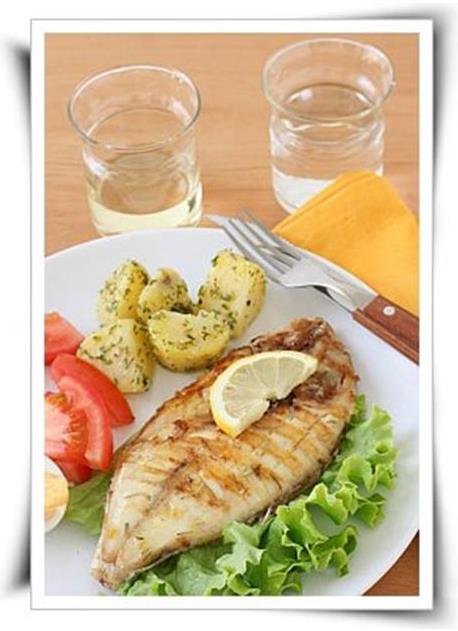
Unsaturated fats are the “good fats.” You’ve most likely seen the terms polyunsaturated and monounsaturated. Both, when eaten in moderation, can help lower bad cholesterol.
Polyunsaturated fats are found in foods such as safflower oil, corn oil, sunflower seeds, flaxseed, walnuts, salmon and tuna.
Monounsaturated fats are found in foods like olive oil, peanut oil, almonds, pecans, sesame seeds and avocados.
The best fats to help with PCOS diets and weight loss in general, are the Omega 3 and Omega 6 essential fatty acids. They slow the absorption rate of carbohydrates and allow your cell membranes to work effectively.
The Omegas also boost your metabolic rate and make your food taste good! You can find these in oily fish like tuna, salmon and sardines or in linseed and flaxseed oil.
Saturated fats are one of the “bad fats.” Avoid these as much as possible. Saturated fats raise total blood cholesterol levels and LDL cholesterol levels; increase the risk of heart disease; and some studies show may increase your risk of Type 2 diabetes.
Trans fats are the other “bad fats.” They come from the process called partial hydrogenation. Although it makes them easier to cook with, research shows that partially hydrogenated trans fats raise your unhealthy LDL cholesterol and decrease your good HDL cholesterol making you more susceptible to heart disease.
Both of these types of “bad fats” include pork fat, beef fat, shortening, stick margarine, and butter.
Not only does water make up a large portion of most foods, it also makes up a large percentage of your body’s composition. 50 to 65% of your body is water. It is an essential element for life. Without it, your body cannot function properly.
Although water yields no energy, a lack of it in your body is the number one cause of daytime fatigue.
THE MICRONUTRIENTS
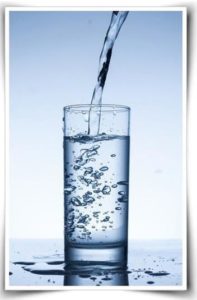
Food also contains two micronutrients. Although it’s a small percentage of the total make-up of food, hence the name micronutrients, vitamins and minerals play a very important role.
Vitamins
Vitamins are organic compounds that are created for the most part only by plants and bacteria. Because of this, our source of vitamins must come from plant foods. The term “Vita” is the Latin word for life. As the name indicates, vitamins, in one form or another, are absolutely essential for our existence.
Minerals
Minerals are micronutrients that come from inorganic matter, primarily the earth. They too, are essential for good health. Minerals participate in thousands of metabolic reactions that take place throughout your body. For example, iron transports oxygen in our red blood cells. Other minerals are critical to your structural make-up, like calcium which is a large part of bones and teeth.
THE “OTHER STUFF”
Unfortunately, food also contains various other non-nutrients. Substances that are not necessary for life and, in some cases, are detrimental to your good health. Many of these substances, such as pesticides, herbicides, and additives, present real threats.
Even though these non-nutrients make up a small amount by weight of our foods, their impact on your health can be huge. They have been linked to serious problems like heart disease and cancer.
FOOD AND PCOS DIETS
If you choose to start a polycystic ovarian syndrome diet, as much as possible, prepare your meals using whole foods. By this we mean not processed or as close to their natural form as possible.
Whole foods are not only better for you, but better tasting as well. Substitute them for processed foods whenever possible. As an example:
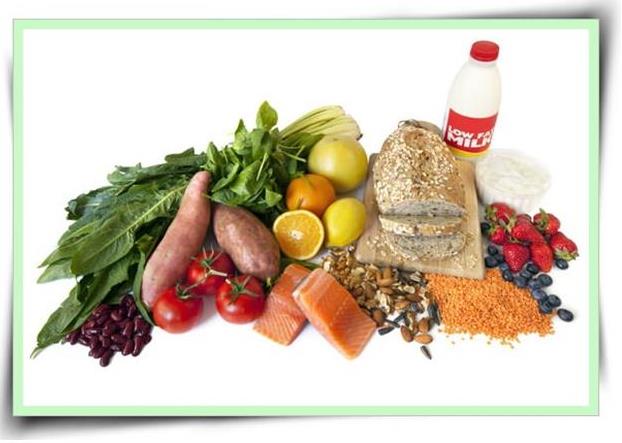
- Whole grains instead of refined or processed grains.
- A baked potato with light sour cream on top instead of potato chips.
- A grilled chicken breast with your favorite seasoning instead of a box of chicken “nuggets” which have added fats, artificial flavorings, and preservatives.
- Your favorite fresh fruit with breakfast instead of a pre-packaged toaster pastry or “breakfast” bar.
Start with a few small changes and after a while it will become second nature.
Just by simply being aware of what is in the food you are eating and making a conscious decision to choose healthier alternatives you will notice a difference. A difference in the way you look and more importantly, a difference in the way you feel.

